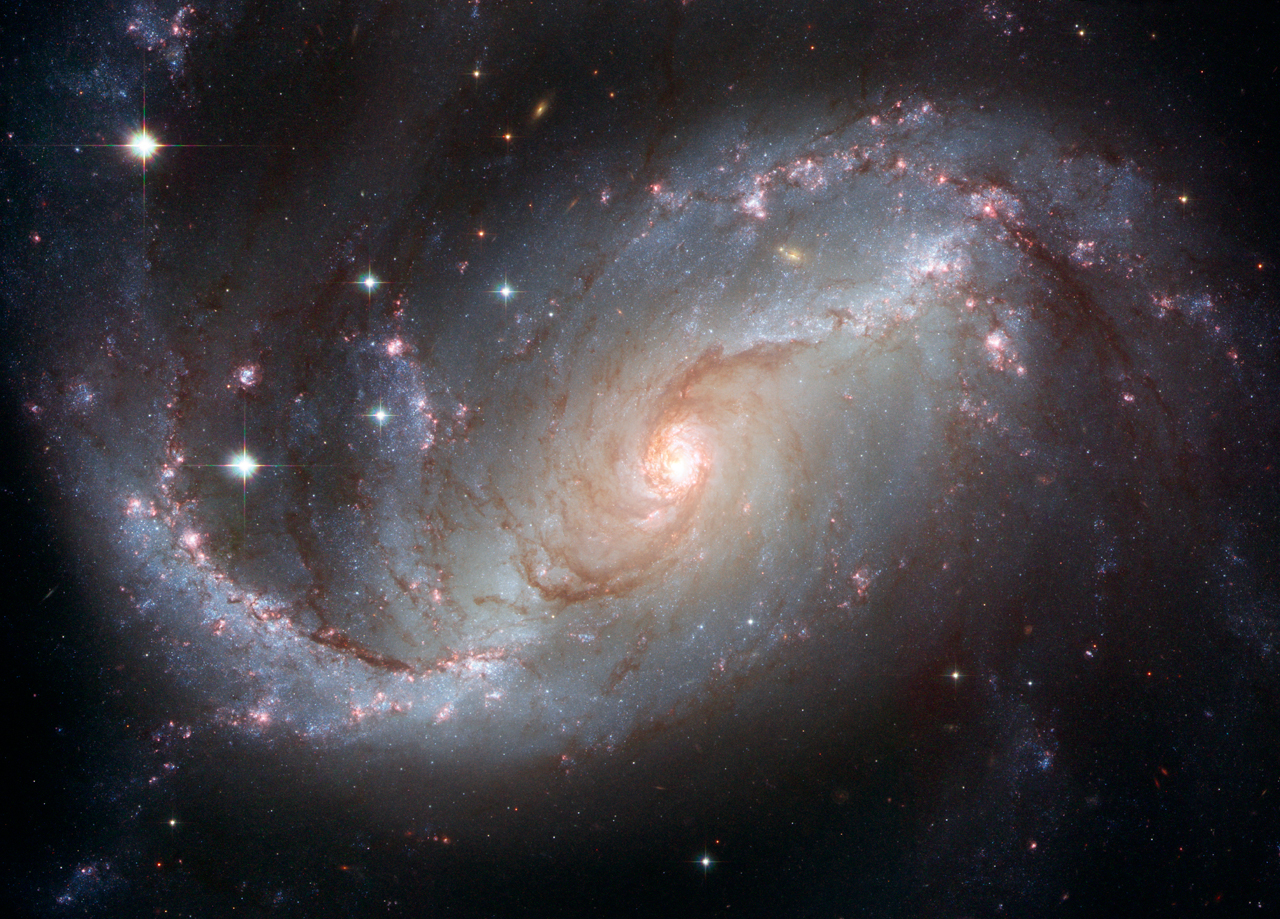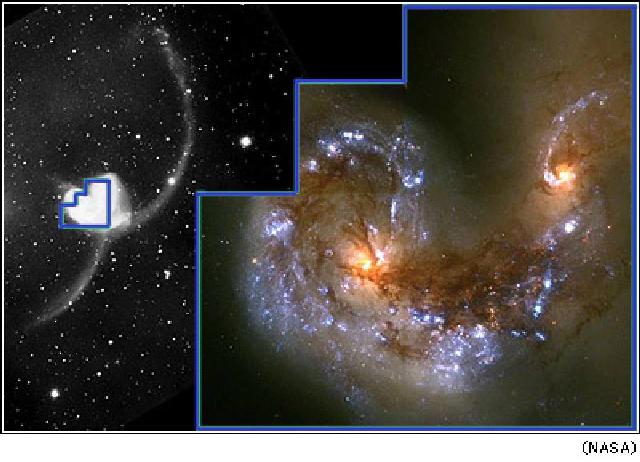There are some topics that we know lots about, but not the entire story and our knowledge is still growing about them. One of these topics is galaxies. By definition they are a massive ensemble of billions of stars, all gravitationally interacting and orbiting about a common center. Galaxies are classified by the variety of forms they take. There are elliptical galaxies, spiral galaxies, barred spiral galaxies, and irregulars.
Spiral galaxies have a bulge at the center and they are flattened disks that have spiral arms. They are classified by the tightness, bulge size, and the way the arms appear. The arms that wrap around the bulge hold young blue stars, gas, and dust. In the bulge there tends to be older red stars.
Elliptical galaxies contain a population of older stars, there tends to be little gas and few young stars. They have an overall globe-like shape, with a bright center surrounded by a bright disk with no structure. Unlike spirals the stars move on randomly oriented orbits within the galaxy.
Barred elliptical galaxies are spiral galaxies that have, running across the center of the galaxy, a bar-shaped collection of stars.
Irregular galaxies tend to be neither elliptical or spiral galaxies. They usually are clumps of very hot new stars with lots of dust and gas and have no definite shape.
Dark matter is an invisible material of unknown composition and gravity causes the dark matter to collapse into halos. Then at the center of dark matter halos, galaxies form. That is how galaxies are arranged in the universe. The brighter spots are the larger spots of dark matter.
When two galaxies collide they reshape each other in drastic ways. When this happens a lot of heat and energy are created and gases in the two galaxies mix, this makes it an ideal star creation time.
The Milky Way Galaxy is 100,000–120,000 light-years in diameter and contains 200-400 billion stars. We are around 26,000 light years away from the center of the Milky Way. It takes the sun around 200-250 million years to orbit once around the Milky Way, this means the Sun is traveling at around 155 miles per second.
 |
The Galactic Bulge is the center of a galaxy where vertically, the distribution becomes noticeably bigger. The bulges contain older stars and lots of dust. That concludes my blog on galaxies! :)
-Paige Morss





No comments:
Post a Comment
Note: Only a member of this blog may post a comment.